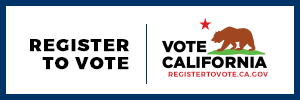Home and Community-Based Services (HCBS) play a significant role in ensuring the independence and autonomy of individuals served by the regional center system. Below is a brief introduction to HCBS, including the compliance requirements ("Final Rule") that are currently being implemented by the federal government and the State of California.
- What Is the HCBS Final Rule?
- Which Regional Center Services Are Affected?
- What Are the HCBS Requirements?
- What Does Final Rule Compliance "Look Like"?
- Information for HCBS Providers
- Information for Providers Who Completed the Self-Assessment
- How Is Compliance-Related Documentation Submitted?
- HCBS Provider Resources
What Is the HCBS Final Rule?
Home and Community-Based Services (HCBS) were developed to offer support to individuals in community settings, as an alternative to institutional care. In 2014, new federal regulations, known as the "Final Rule," were released by the Centers for Medicare & Medicaid Services (CMS), requiring homes and programs that deliver HCBS to meet certain criteria. This rule, as it was put in a CMS news release, "reflects CMS' intent to ensure that individuals receiving services and supports through Medicaid's Home and Community Based Services programs have full access to the benefits of community living and are able to receive services in the most integrated setting."
Since that time, the Department of Developmental Services (DDS) and its partners (regional centers, service providers, etc.) have been working to implement the HCBS Final Rule, with full compliance now required by March 17, 2023. (The deadline was extended by one year due to the difficulties created by the COVID-19 pandemic.) Any individual or organization receiving or providing HCBS is likely to be affected by the Final Rule, as activities are happening now to help California meet the new federal requirements.
Which Regional Center Services Are Affected?
Both residential and non-residential day services will ultimately be affected by the HCBS Final Rule. Specifically, the services with the following service codes will be required to comply with the rule:
| Residential Services |
| 096 - Geriatric Facility |
| 113 - DSS Licensed Specialized Residential Facility |
| 904 - Family Home Agency |
| 905 - Adult Residential Facility |
| 915 - Adult Residential Facility |
| 910 - Children's Residential Facility; Group Home |
| 920 - Children's Residential Facility; Group Home |
| Non-Residential Day Services |
| 055 - Community Integration Training Program |
| 063 - Community Activities Support Services |
| 475 - Community-Based Training Provider |
| 505 - Activity Center |
| 510 - Adult Development Center |
| 515 - Behavior Management Program |
| 855 - Adult Day Care Facility |
What Are the HCBS Requirements?
All settings (Residential and Non-Residential) must:
-
Provide the same level of full community access and integration for individuals receiving Medicaid HCBS as is provided for individuals not receiving Medicaid HCBS
-
Be selected by the individual from among setting options that include non-disability-specific options and, in the case of residential settings, the option for a private unit
-
Ensure an individual's right to privacy, dignity and respect, as well as freedom from coercion and restraint
-
Optimize, but not regiment, individual initiative, autonomy and independence in life choices, including but not limited to: daily activities, physical environment and social interaction
-
Facilitate individual choice regarding services and supports, including who is to provide said services and supports
In provider-owned settings, such as Family Home Agencies (FHAs), FHA Home Providers, Community Care Licensed (CCL) Group Homes, Adult Residential Facilities, and Residential Facilities for the Elderly, there are additional requirements:
- The unit or dwelling must be a specific physical place that can be owned, rented or occupied under a legally enforceable agreement entered into by the individual receiving services
- Sleeping or living unit must afford privacy to the individual receiving services, including doors that can be locked by the individual, choice of roommate if the unit is shared, and the freedom to furnish or decorate the unit within the terms of the lease or other agreement
- The individual receiving services must be given freedom and support in scheduling and activities, and must have access to food at any time
- The unit or dwelling must be physically accessible to the individual receiving services
What Does Final Rule Compliance "Look Like"?
All settings that are HCBS Final Rule compliant are required to provide individuals receiving services with the opportunity to:
- Spend time in and be active in the local community
- Work alongside people who do not have disabilities
- Have choices regarding services and supports, including who will provide the services and supports
- Control personal scheduling and activities
For residential settings, specifically, individuals receiving services must have:
- Choices regarding roommates, if the space is shared
- Privacy within his, her or their own room, including the ability to the lock the door
- The ability to have visitors at any time, and to choose with whom to visit
- Freedom to furnish and decorate his, her or their room
- Protection from eviction by way of a lease or legal agreement
Information for HCBS Providers
The Department of Developmental Services (DDS) has not yet disseminated guidance for providers of HCBS who opened services after the 2020 provider self-assessment period. Once such guidance is provided by the Department, GGRC will contact the affected providers accordingly. The information in the following subsection pertains only to providers who completed the 2020 self-assessment.
Information for Providers Who Completed the Self-Assessment
The next step for providers transitioning into HCBS Final Rule compliance is to complete and submit one of two types of forms:
- A Validation form is for providers who self-reported as being in full compliance, and who must now provide documentation of said compliance
- A Remediation Plan form is for providers who self-reported as not yet being in full compliance, or who PCG (a DDS contractor) determined did not fully meet the requirements through the virtual site-assessment process; a provider's Remediation Plan must address the area(s) deemed not in compliance, and the steps the provider will take to achieve compliance no later than March 17, 2023
Moreover, there are two versions of each form, one for non-residential service providers and one for residential service providers:
Any provider required to complete a Validation or Remediation Plan form will receive a letter via email (from the
This e-mail address is being protected from spambots. You need JavaScript enabled to view it
address) explaining what must be submitted. If affected services are provided under multiple vendor numbers, then the provider will receive a distinct letter for each vendor number.
How Is Compliance-Related Documentation Submitted?
The person listed on the provider's self-assessment will receive an email with a link to the pertinent vendor number in a GGRC Sharepoint folder. (If said person is no longer employed by the provider, then the provider should send notification to
This e-mail address is being protected from spambots. You need JavaScript enabled to view it
.) In the folder, there will be the completed self-assessment, a letter from GGRC, the relevant Validation or Remediation Plan form ("Enclosure") that needs to be completed (instructions included), and resources to help the provider complete the compliance process. Once completed, the form, along with any other required documentation, must be emailed to
This e-mail address is being protected from spambots. You need JavaScript enabled to view it
; after a careful review, GGRC will submit the form and its supporting documents to DDS. (Any questions related to this process should also be sent to
This e-mail address is being protected from spambots. You need JavaScript enabled to view it
.)
HCBS Provider Resources
- HCBS Onsite Evaluations: Provider Guidance
- HCBS Onsite Evaluations: Provider Guidance - Plain Language
- HCBS Review Tool
- HCBS Review Tool: Non-Residential Settings
- HCBS Settings
- HCBS Training Material: Compliance Guidelines
- HCBS Rules and Requirements Presentation
- Guiding Questions for Validation and Remediation Review

 Transparency
Transparency

